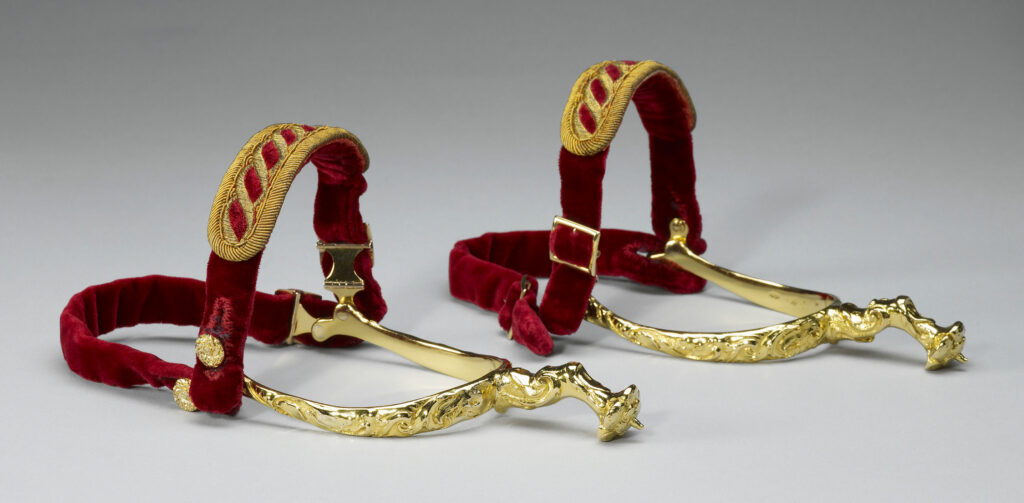The use of spurs at coronations dates back to the Coronation of King Richard I in 1189. These spurs were made in 1661 for King Charles II but were altered in 1820 for George IV when new textiles replaced the earlier buckles and straps. The original symbolism of the spurs comes from an era when the monarch would have ridden at the head of an army and performed ceremonies for the creation of knights. The spurs were presented by the Lord Great Chamberlain, Lord Carrington, one of the Great Offices of State. Lord Carrington presented the Spurs due to a historic claim for the holder of the office to perform this duty. The Lord Great Chamberlain is the senior representative of the Monarch in the Palace of Westminster, and is key figure in ceremonial occasions such as the State Opening of Parliament, where he is seen bearing his staff and ceremonial key of office. When The King has arrived in Parliament and seated on the Throne in the House of Lords, is it the Lord Great Chamberlain who instructs Black Rod on behalf of His Majesty to summon the House of Commons. The post of the Lord Great Chamberlain is hereditary, but over the centuries it’s entitlement has passed down to three families who share the role on rotation, changing immediately on the accession of a new Sovereign. They are the Marquesses of Cholmondeley, the Lords Carrington, and the Baroness Willoughby d’Eresby.

© Royal Collection Trust